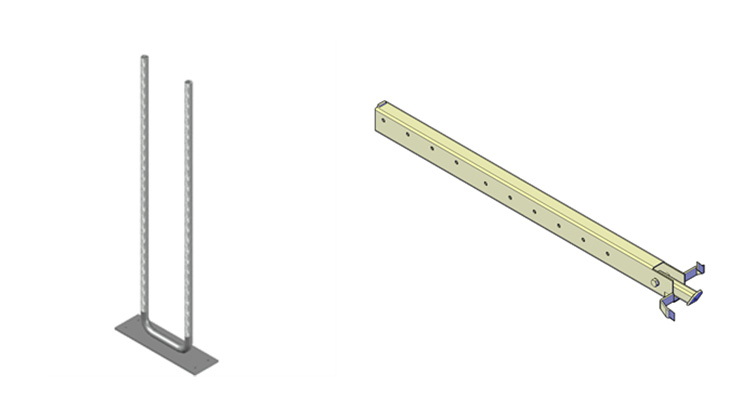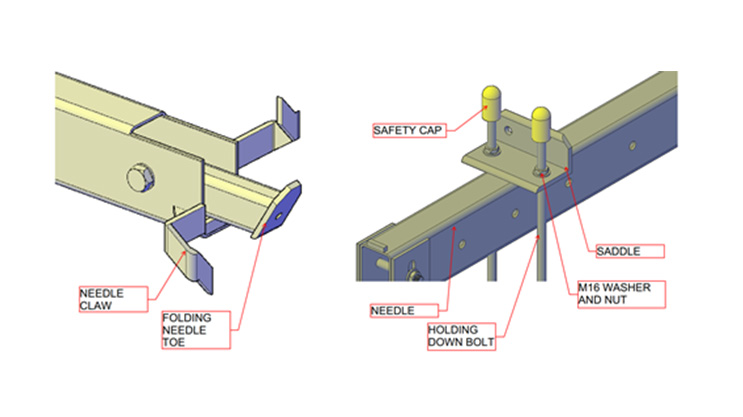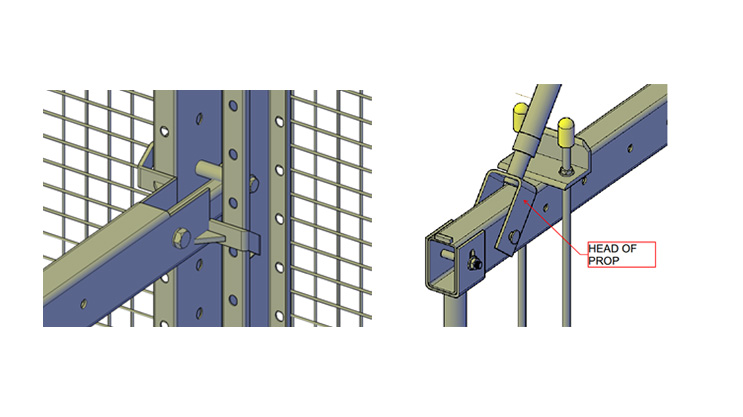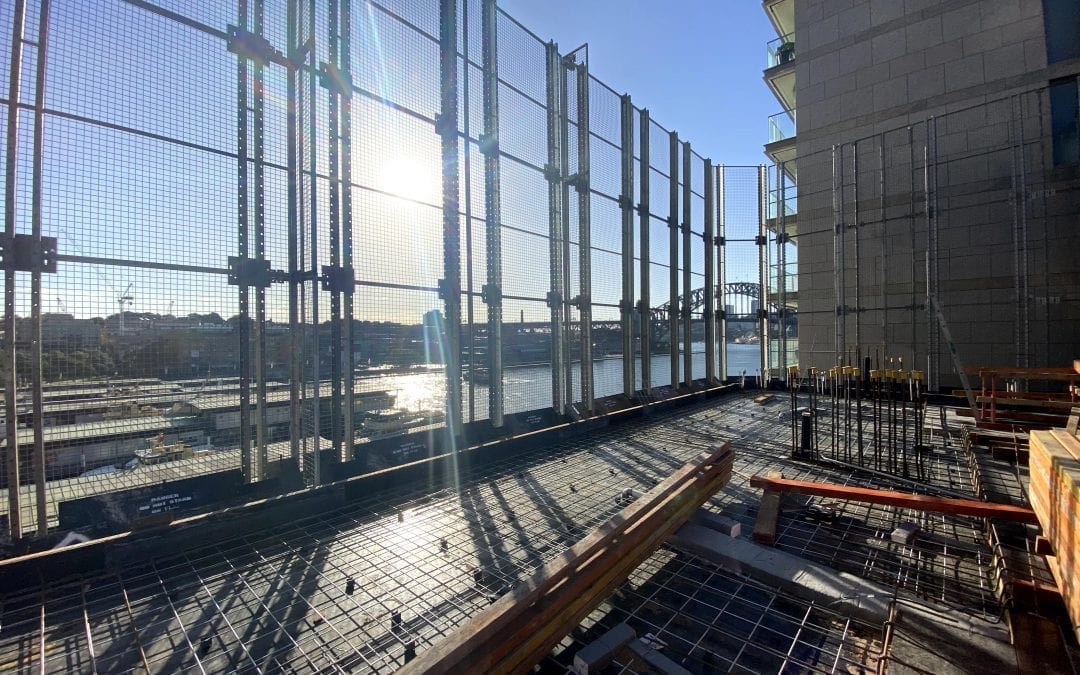Natform Screen System – Introduction
The Natform Screen System has been a primary product of the Acrow Group of Companies for over 2 years now, and it is a versatile system that can be used in a wide range of scenarios. That is why we have put together this general information guide to help you understand the basics of the system.
HOW IT WORKS
The Natform system was the first Screen System to enter the Australian market, and the effect that it had on the market was far reaching. The design of the Natform Screen System and how it operates is relatively simple. Natform Screens became heavily accepted in the market and remain the leading Screen product due to their flexibility to deal with a wide variety of on site scenarios. One such flexibility of the Screen is the ability to be constructed into many different sizes, the height of the Screen can be made to be a dimension of 0.8m all the way to 13m high, and the width of the Screen can be made to be a dimension anywhere between 0.8m to 3m wide.
Screen Manufacture
Each unit consists of the following componentry:
Soldiers: The soldiers of the system are constructed out of two back to back C-purlins which are fixed together by M16 bolts with sleeves around them to create a spacing between the two purlins of 100mm. The length of the soldiers can vary depending on the size of the Screen required, as an example, a 13m Screen would have a soldier length of 13m, whereas a 5m Screen would have a soldier length of 5m. Typically, the Screen will have a set of two soldiers fixed onto the system. These soldiers are responsible for giving the Screen its strength and acts as a rail for the Screen when it is climbed, which will be explained in further depth later.

SCREEN SOLDIER DETAIL
Assembled Mesh Panels:
This component of the system is what stops personnel and materials from falling off the edge of the structure. The mesh panel is assembled by welding a sheet of mesh onto a 25mm x 50mm RHS frame. The sheet of mesh can have different aperture sizes for different use cases and to comply with different state standards. Typically, the mesh used is 50mm x 50mm, however Queensland and Victoria have begun using 25mm x 25mm. The size of the assembled mesh panel will vary depending on the size of the Screen, for example a 2.4m wide Screen would be made from a 2.4m x 2.4m mesh sheet welded to the RHS frame.

SCREEN ASSEMBLED MESH PANEL DETAIL
Connector Plates:
The role of connector plates is to join the soldier to the assembled mesh panels. The plate sits in-between the soldier and the two assembled mesh panels so that it is centred to the join between the two panels and the centre line of the soldier.

SCREEN CONNECTOR PLATE DETAIL
Fixings:
The fixings are used to tie all of the components together, for example, specialised U-bolts are used over the join of the two panels and tightens them to the connector plate, then, a separate bolt is used to connect the lips of soldier to the connector plate, making a fully assembled system.
The Natform Screens are typically manufactured to common sizes and are stored across the three main yards, where required, specialised sizes can be manufactured to suit many different project variables. The Screens can then be delivered directly to site as an Assembled unit which can then be erected into position.
HOW SCREENS WORK IN MEDIUM TO HIGH RISE SETTINGS
In a typical situation, Screens are connected to the structure using Cast-in Holding Down Bolts, Needles, and Props. The Holding Down Bolts (HDBs) consist of two M16 threaded rods welded to a steel plate, which are nailed to a formwork deck prior to re-enforcIng steel being installed and the slab being poured. Once the slab has been poured and cured to an adequate strength (typically the following day), a needle is placed in-between the two threaded rods of the HDB so that it protrudes past the live slab edge.

The head of the needle consists of two ‘claws’ which can be engaged to the soldier by rotating the head of the needle around the lips of the soldier. Once engaged to the soldier, the needle is fixed to the slab using a saddle and M16 washers and nuts to create a fixed system. Where the needle is acting as a support member for the Screen, a certified lifting point in the soldier will sit on the ‘toe’ of the needle, which will allow the weight of the Screen to be transferred through the needle and will create a pull-out load on the two threads of each HDB, which in-turn, transfers into the structure.

In most scenarios, a Screen will be connected to the structure with multiple needles, two of the needles will act as the support needles and as such will take the vertical dead loads of the Screen, however, other needles may be used on different levels of the system that will act as restraints only. These restraint needles will only help in restraining the Screen from the horizontal wind loads that are applied to the system, as wind is applied, the Screen will move inwards or outwards until the lip of the soldier presses against the claw of needle, which then stops it from further movement. The needle is installed onto a stand and adjustable bottle jack that can be used to plumb the Screens. Another restraint and plumbing mechanism that is used to fasten the Screen to the structure is the push-pull prop.
Although this dimension can vary, Screens are typically installed so that the mesh of the system sits 750mm away from the slab edge. The reason behind the large distance is so that working platforms can be installed directly onto the Screen to allow personnel to do works over the live edge. The Screen platforms are constructed using steel L-brackets that are bolted directly to the soldier, timber, and ply. Some of the works that are conducted off the platforms on the Screens include stressing the reinforcing steel within the slab and doing façade works.

In addition to the standard Screen widths that are produced, additional width can be achieved by installing wing panels, which are assembled mesh panels made to suit any width from 100mm all the way to 1200mm. Bracketry is used to attach wings directly to the Screen and allows for designs to be much more flexible. To make the installation process easier on-site, the support pins and props will be pre-installed into the correct position on the Screen. This reduces the amount of work required on-site and streamlines the installation process.

HOLDING DOWN BOLT NEEDLE

NEEDLE CLAW & TOE TIGHTENED DOWN SADDLE

SUPPORT NEEDLE CLAW HEAD OF PROP CONNECTION
ENGAGED WITH SOLDIER WITH NEEDLE
Please note that this advice and the comments herein are general in nature. If ever in doubt, please seek advice from an engineer.

